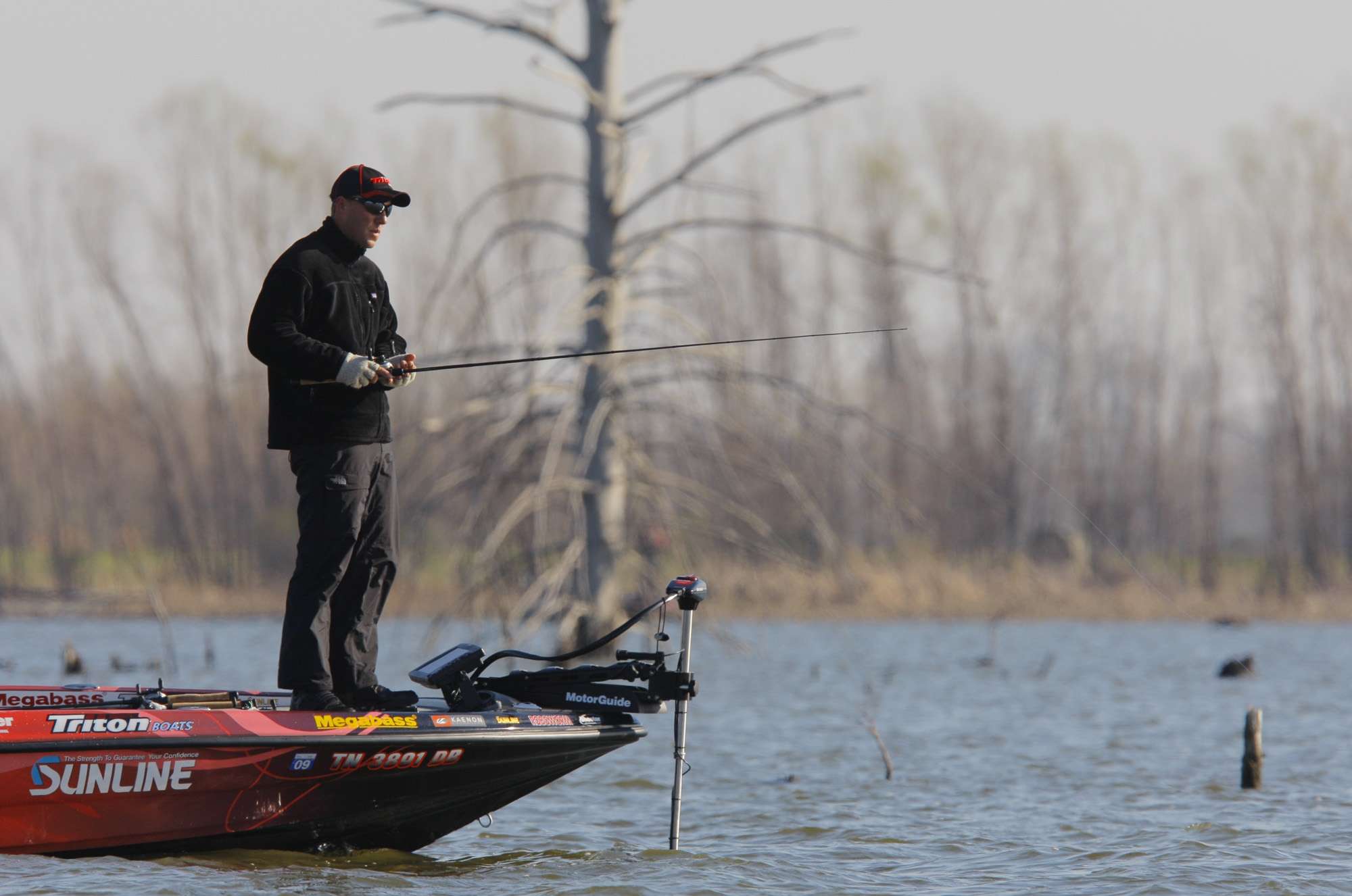
BIRMINGHAM, Ala. — “I’ll know when I get there.”
That’s what several Bassmaster Classic qualifiers had to say about Red River conditions and how the weather might or might not dictate the bite for the Feb. 24-26 Bassmaster Classic out of Shreveport-Bossier City, La.
None of the 49 Classic qualifiers have been on the river lately, because it’s been off limits for more than two months. That will change Friday, the first of four days of practice. But until they start looking and/or casting, what Classic anglers can surmise about the Red stems from past knowledge and long-distance reconnaissance.
It’s a safe bet that the majority have been tracking weather trends and river levels for weeks. Most anglers’ ideal conditions would be moderate air and water temperatures, Goldilocks water levels (not too high and not too low) and a moderate rate of water flow. And that’s been the Red over the past few days.
But the river is famous for turning wild. That’s what makes competition there so tough, especially at the Classic, in which the prestige, visibility and $500,000 first-place prize create extra pressure on anglers.
A hard rain, for example, can quickly muddy the main channel. A swift and high main river swollen from upriver deluges can push stained water into the normally more clear and productive backwaters. Under such conditions, the big and mighty Red River suddenly seems to shrink, said Classic qualifier Todd Faircloth, who can drive two hours from his Texas home and be on the river.
“What high, muddy water does is concentrate everybody, because there’s a smaller percentage of fishable water,” said Faircloth, who competed in the first Classic on the Red River three years ago, finishing 35th.
Conversely, in a dry spell, some backwater areas can drop and be inaccessible by boat if they don’t disappear altogether.
Like most Classic qualifiers, Alabamian Aaron Martens would not like to find extremely low water when he arrives back in Louisiana.
When he scouted in December, low water was what he saw. “It was impossible or very difficult to get to any of the stuff we fished before (in 2009),” he reported. “At normal pool, fishing should be decent. I’m not sure what it is now; I’ll look at it when I get there.”
He’s hoping the South’s moderate winter temperatures will continue. Not so much for his comfort — although he’d take it, he said — but because he’s found that Red River bass tend to bite better in warmer weather.
He has not been tracking upriver or local rainfall closely.
“When I get there, I’ll check the river flow. Mostly, though, just seeing the river is going tell me the most,” said Martens, who was ninth in the 2009 Classic.
Brent Chapman from Lake Quivira, Kan., is hot off a Feb. 12 fish-off win in the Bass Pro Shops Bassmaster Central Open in Texas. Like other Classic qualifiers, he is expecting a backwater bite in tight quarters.
“It’s a great fishery, but it tends to fish small,” said Chapman, who finished 27th in the 2009 Classic. “You have to expect to fish around several other boats.”
Edwin Evers has not been back to the Red since Classic 2009, in which he finished fifth. At home in Talala, Okla., he tracked Red River water levels. Lower water would definitely create a crowded backwater contest, he said.
“Low water will put a whole lot more boats in those areas, and it will fish a lot smaller than it did when we were there before,” he said.
Like other anglers, Evers will evaluate the Red when he sees it again. But under any given river condition, he expects the weights to be tight.
“It’s just that type of fishery,” he said. “There’s really no hidden, secret area that somebody can use to blow this thing out. Every ounce is going to count.”
Evers noted that given extremely low water, some competitor might decide to run a shallow-draft aluminum boat or a jet boat into a skinny backwater,” but that angler will not be him. He planned to leave his aluminum rig at home. He said no condition would be likely to tempt him to give up the advantages of his fully equipped fiberglass rig.
Faircloth is of the same mind; he said going to aluminum is not an option for him.
So what does Mother Nature have planned in northwestern Louisiana come Classic time? On Feb. 16, the National Weather Service seven-day forecast pegged daily highs in the 60s and nighttime lows in the 40s, with mainly cloudy skies and rain showers through Feb. 22. The 10-day Weather Channel forecast shows that the first competition day, Feb. 24, will be under sunny, clear skies with a high of 70 and low of 48 degrees.
As to water level, according to the National Weather Service’s hydrologic statement of Feb. 15, the Red’s readings have been falling. The flood stage at Shreveport is 30 feet; the river on Feb. 15 was 18.4. For the start of practice Feb. 17, the water level prediction was at 17 feet. Normal at Shreveport is 17.72 feet. By Monday, Feb. 20, the date of the farthest-out prediction, the level was expected to be steady at 17 feet.
Fog reduced visibility in the Shreveport area to a quarter mile as recently as today in the early morning hours. Fog isn’t just a driving nuisance, it can change an entire Classic game. Fog over water can delay a morning start, as it did last year at the New Orleans Classic. This year, for any angler counting on having enough time to lock down into the Red River’s lower pools, a shortened competition day won’t work.
Given all the possibilities, will the weather be a ruling factor in Classic No. 42? Until a crystal ball appears, as Faircloth put it: “We’ll just have to wait and see what happens when we get there.”
